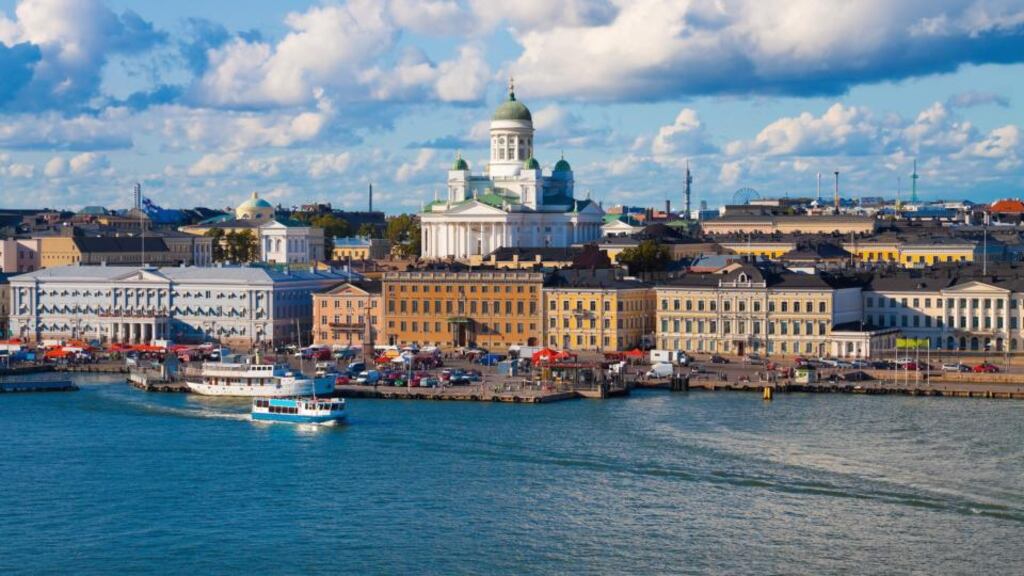Publicity is the thing Dublin will most miss out on after losing out to Cape Town for the World Design Capital title next year. Helsinki held it in 2012 and the canny Finns milked this unrivalled opportunity to put their charming capital on the map and show everyone how cool it is, in every sense.
Monocle , the global lifestyle magazine for youthful jet-setters, devoted 20 pages to Helsinki last May, detailing what it has to offer in bite-sized nuggets. In 2011, it had named the Finnish capital as the world's most liveable city – obviously ignoring an extreme climate ranging from +30 to -30 Celsius.
“Better design is a no-brainer,” said Pekka Timonen, who was director of World Design Capital Helsinki 2012. “Without design, not one of the greatest civilisations in human history would have flourished . . . There simply would be no roads, no airplanes, no fridges, no paperclips, no cell phones or no cities”.
It has been estimated that Helsinki’s designation generated 580 projects, 2,800 events and more than one million visitors. But beyond these impressive figures, it “expanded the use of design in Finland”, bringing about a greater understanding of its possibilities, and gained “exceptional international attention”.
With a budget of €16 million, Timonen and his team championed the idea of the “design-driven city”. And in Helsinki’s case, this has the force of history; in 1812, after Finland became a grand duchy of the Russian empire, Helsinki was designated as its new capital and a grand plan was drawn up to develop the city.
Conceived by Berlin-born architect Carl Ludwig Engel, it closely followed the model of St Petersburg, laid out on a grid with neo-classical buildings lining the streets. Indeed, Helsinki was often used as a substitute for St Petersburg (now less than four hours away by high-speed train) in films made during the Cold War.
Planning is still the city’s forte. A strategic decision made 40 years ago to relocate Helsinki’s cargo port to Vuosaari, in the east, freed up three old port areas close to the centre, and these are being redeveloped as natural extensions to the city – though with some high-rise elements that will change its relatively low skyline.
Among the projects and events for 2012, perhaps the most daring was Kulttuurisauna – the first public sauna to be built in Helsinki for 50 years. It was designed by architect, urbanist and rapper Tuomas Toivonen in collabration with his wife, graphic designer Nene Tsuboi; they mortgaged their flat to pay for it.
Another project was rather more controversial – the Kamppi Chapel of Silence by Helsinki architects K2S. Some city councillors opposed giving the site to the Lutheran church, arguing that it should be non-denominational. But having invested €7 million in the project, inevitably the church has been using it for some services.
Built on the edge of Narinkka Square, which used to be an outdoor bus station (the buses are now underground), it has been likened to Noah’s Ark or, more irreverently, “God’s toilet bowl” because of its oval-shaped timber structure. It’s a beautiful object with an awe-inspiring interior, lit from above by daylight.
The city owns two-thirds of the land in Helsinki, which gives it great leverage in terms of what’s built, deputy mayor Hannu Penttila told us. He’s in charge of planning and was responsible for insisting that all new apartment blocks must achieve an A rating for energy efficiency; stroppy developers must fall into line.
“When making plans, we can really control the result,” he said. The new development areas have been designed to house 60,000-70,000 people and will take about 20 years to complete. And it will all be mixed housing, with a minimum of 20 per cent “social”, 40 per cent “affordable” and the remaining 40 per cent “private”.
Helsinki has had a “no ghettos” policy for years, so there are no sink estates or gated enclaves anywhere in the city. “We’re very proud of that and also of the fact that we have 44,000 social housing units,” Penttila says. And the council has no intention of selling any of them, as London (and Dublin) did during the Thatcher era.
“At the end of the day, design is more than desirable objects, wow-architecture, fancy clothes, stylish furniture or gadgets,” Pekka Timonen said. Finland also has a great design tradition, and many of the everyday objects – glasses, mugs, cutlery – designed decades ago by Alvar Aalto or Kaj Franck are still in demand.
It’s been estimated that 80 per cent of Finnish households have the classic Aalto “wavy” vase, first unveiled at the Paris Expo in 1937 and reproduced ever since by Finland’s leading designer glassware company Iitala. And as for those Fiskars scissors with orange plastic handles, there are more than one billion in use worldwide.












